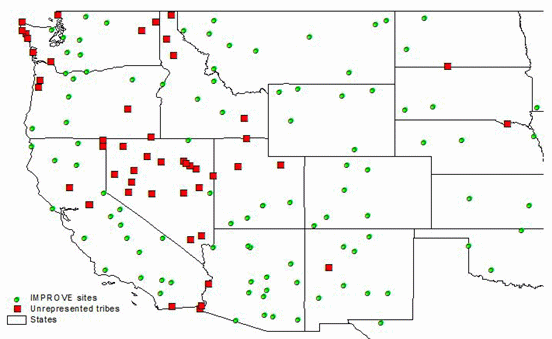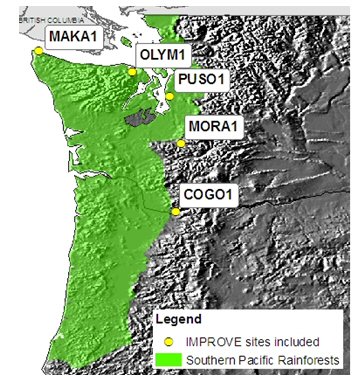|
| |
|
Task 2: Analysis considering height of interveining terrain |
| |
| 2.4 Results |
| |
| Using a strict threshold for
representativeness, there were only 49 tribes that did not have a site that
might be considered representative using this method. |
| |
|
Click here to go
directly to the results by tribe |
| |
| This list of 49 tribes was
generated by comparing only those IMPROVE monitoring sites that are
currently collecting data as of March 2008. A tribe needed at least one site
with a ratio of one in order to be represented by a site. Overall 193 tribes
had a representative site from the list of 109 IMPROVE and IMPROVE protocol
sites in the western and central US. A list of potential representative
IMPROVE sites for each tribe is presented in Appendix E. The state of Nevada
had 16 tribes that did not have a representative aerosol monitoring site.
The state of Washington had the second most number of tribes with no
representative sites at 9 followed by California with 7. By removing the
Walker River tribal station, Nevada gained two tribes more tribes without a
representative visibility monitoring site. Figure 4-2 shows the tribes that
did not have a representative IMPROVE site. |
 |
| |
| This effort did not consider
the impacts of the new site in Washington state at the Makah tribe.
According to the VIEWS database, this site started collecting data in August
2006 and is located at the northwest tip of the Olympic peninsula as shown
in Figure 4-3. Adding this site into the area benefits the tribes along the
Pacific Coast considerably since there are no IMPROVE sites besides the one
at Olympic National Park, OLYM1. |
| |
 |
| |
| |
| |
| |
| |
|
Last updated 21 March 2008
|